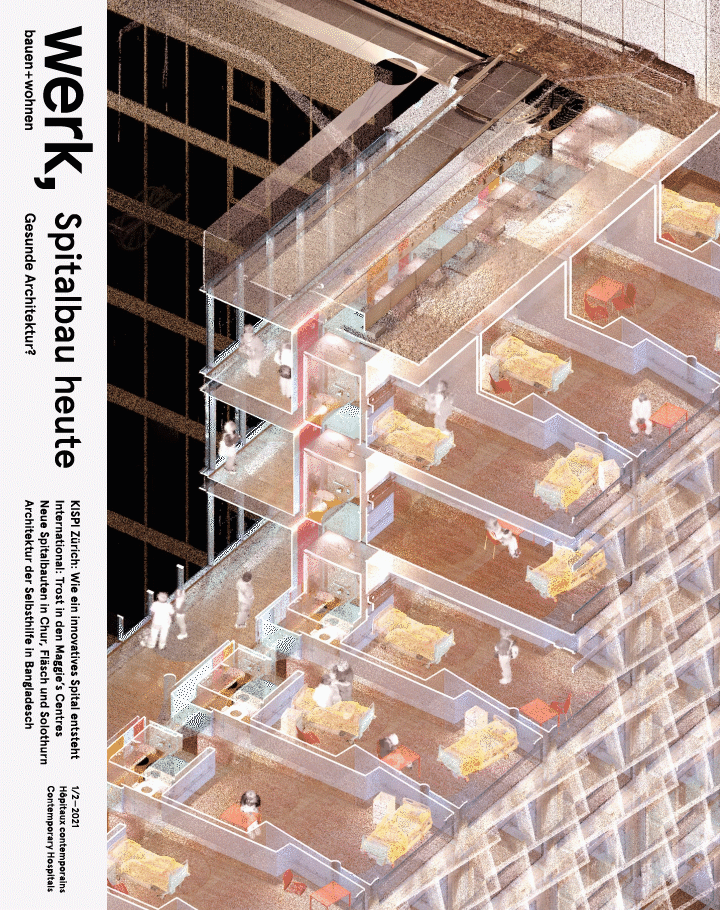werk, bauen + wohnen 1/2-2021

Hospitals for People?
Seldom has public health occupied people as intensively and continuously as in the past year, 2020. However, the current hospital building boom has nothing to do with the pandemic. Around 15 billion Swiss francs are to be currently invested in new hospital buildings, around 70 larger projects are underway. This is a wager on the future of the health system. And no-one can say whether, in the end, the rival hospitals might not in fact offer a surplus of space.
The current building projects show that the days of slender blocks of stacked bedrooms are numbered. Today labyrinthine treatment centres with examination and therapy rooms, operating theatres, and intensive care stations are being built in bulky volumes. New bedroom wings have efficient double stations, which also require deep buildings.
With efficiency at this scale, where does the scope for good architecture, or indeed for an architecture of healing that focuses on the patient’s wellbeing, lie? How does daylight find its way into the depths of the new buildings? How can spaces with identity and good orientation be made? Where is place for homely materials?
As the patients’ advocates architects fight for spatial quality in the labyrinthine jungle of the hospital: they cut paths, defend internal courtyards, create niches and moments of spatial expansiveness, place accents using colours and materials — often a hard struggle. We visited several new hospitals and recognised the quality of the designs, the enormous achievement of the architects and the teams of users. Nevertheless: none of the new buildings made us truly happy. In current hospital building the pressure of hygiene and economy seems too massive, daily life seems far too distant, the dominance of technology too oppressive. Somewhat wistfully we recall the friendly feeling of the old university hospitals from the 1940s in Zurich or Basel with their open entrance halls, balconies, cork floors and wooden fittings: today, do we not perhaps long for homely hospitals of this kind again? — Daniel Kurz, Jenny Keller